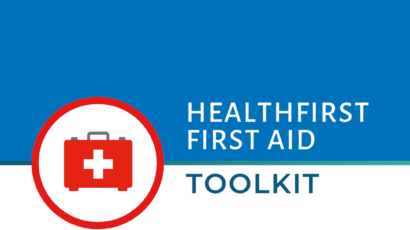Posted by Dr Michelle Wright
This week’s Health Matters is delving into a subject many dog owners may not have considered: when and how to give Cardio-Pulmonary Resuscitation (CPR) to their four-legged friends.
CPR for your dog?
I, Dr Michelle Wright, was teaching cardio-pulmonary resuscitation (CPR) during a Basic Life Support course a few weeks ago and one of the participants asked me if what they were learning for humans could also be applied to dogs.
So, CPR in dogs is the subject of this week’s Health Matters! How can you help your four-legged friend who isn’t breathing and who doesn’t have a heartbeat.
First and foremost, as in any first aid situation, safety is paramount. Always ensure it’s safe for you to approach the dog, and make sure you can transport them to a vet after providing assistance. It’s also important to note that CPR may not be effective for dogs who are very unwell or have severe injuries.
How to assess if your dog needs CPR
With an unconscious, or non-responsive dog, to assess if CPR is needed, think about the ABCs – Airway, Breathing and Circulation.
Start by checking the airway. Open the dog’s mouth and pull their tongue forward. If there’s anything blocking their throat, try get behind it to remove it safely.
Next, assess their breathing. Place your hand on their chest to feel for movement and bring your face close to theirs to detect any airflow from their nostrils.
If they aren’t breathing: circulation – do they have a heartbeat? Use your hand to feel their chest or feel inside their upper leg for their femoral artery.
If the dog isn’t breathing, move on to checking for circulation. Feel for their heartbeat by placing your hand on their chest or feeling for their femoral artery inside their upper leg.
If there’s no heartbeat, it’s time to initiate CPR and if there’s someone else there, ask them to start thinking about how you can get your dog to the nearest vet.
How to preform CPR on your dog
To perform CPR, lay the dog on their right side. Or, if they’re a flat-chested dog like a British or French bulldog, on their back.
A firm, flat surface is needed – so on the ground is best.
Then, with them either on their side or their back, place your hands over their heart and give 30 chest compressions – the same number as in humans – at a rate of 100 to 120 per minute. You need to let the chest fully rebound fully in between compressions.
After 30 compressions, provide 2 breaths. With their neck extended, close the dog’s mouth, form a seal around their nose with your mouth, and exhale into their nostrils. Observe their chest rising as you do so. Watch it fall again and then give a second breath.
Repeat this cycle of 30 compressions and 2 breaths for 2 minutes straight.
After 2 minutes, reassess for a heartbeat. As before, use your hand to feel their chest, or feel inside their upper leg. If you detect a heartbeat, get the dog to the vet as soon as possible.
If there’s still no heartbeat and it’s safe to do so, transport the dog to the vet while continuing CPR if possible.
Hopefully you’ll never need to use this emergency first aid but being prepared and understanding what to do could potentially save your dog’s life.





